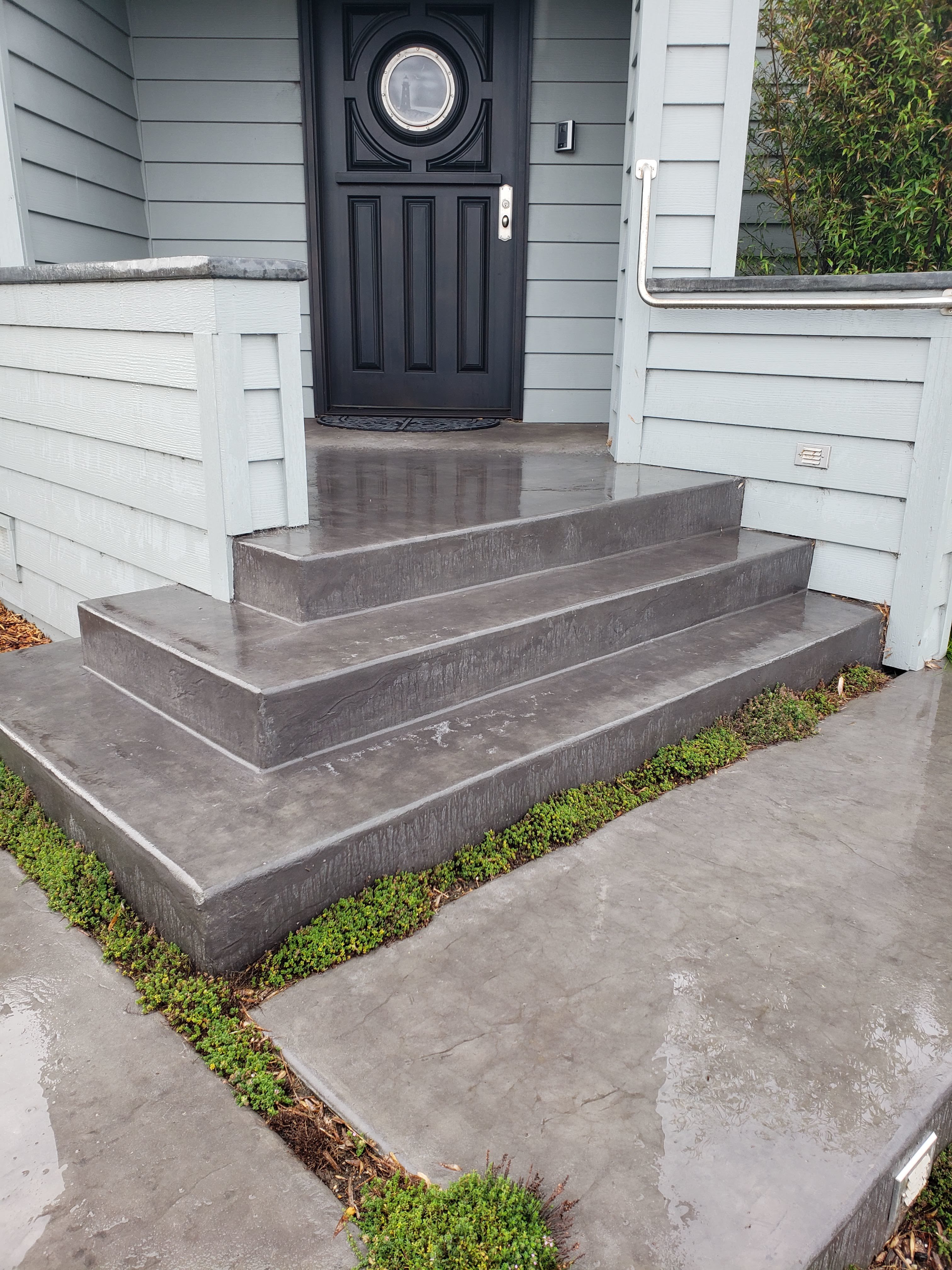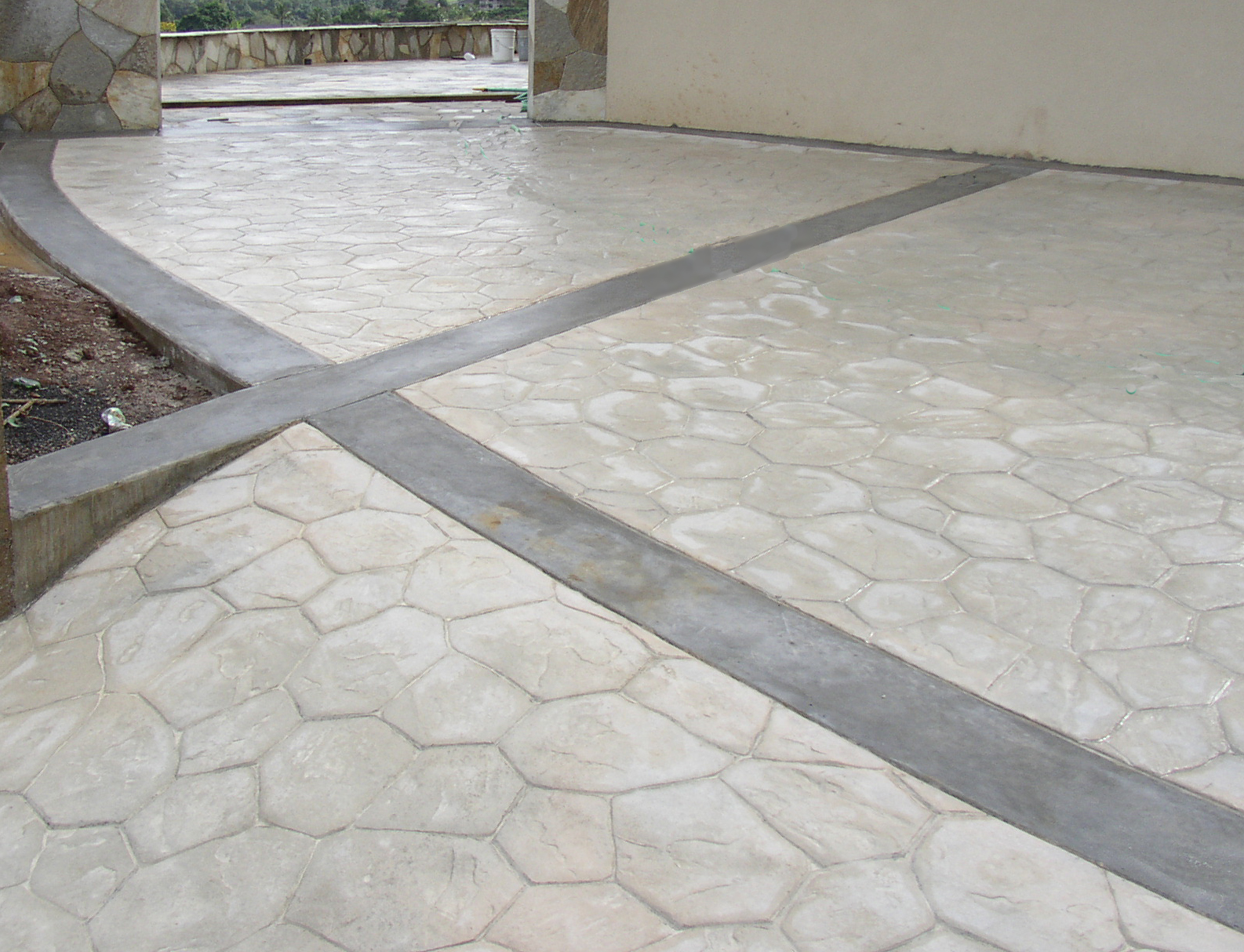Have you ever looked at a plain concrete slab and thought, "There has to be more to it?" Well, you are not alone. So many people dream of transforming their outdoor areas, making them truly unique. That plain, gray surface, it really can become a canvas for something truly special. It's almost like you want to give your home a distinct personality, a welcoming feel right from the ground up, you know?
Making impressions in concrete is a wonderful way to add character and visual appeal to any space. It is a technique that takes something very practical and turns it into a piece of art, a bit like a permanent design statement. Think about patios, walkways, or even driveways. They do not have to be just functional; they can be genuinely beautiful, too.
This approach allows for a huge range of textures and patterns, mimicking natural stone, brick, wood, or even creating abstract designs. It is about bringing a touch of craftsmanship to a very common material. You might be surprised at just how much variety is available, and how simple some of the methods actually are, really. We will explore how these unique surfaces come to life, and perhaps inspire your next home project.
Table of Contents
- What Are Impressions in Concrete?
- Types of Concrete Impressions
- Getting Started: Tools and Materials
- The Process: Making Your Mark
- Common Questions About Concrete Impressions
- Maintaining Your Impressed Concrete
- Final Thoughts on Concrete Impressions
What Are Impressions in Concrete?
Beyond Plain Slabs
Impressions in concrete are simply textures or patterns pressed into wet concrete before it fully hardens. This method creates a surface that is much more visually interesting than a plain, smooth slab. It can mimic the appearance of other building materials, or it can be something completely unique. Basically, it is about giving concrete a different look and feel, so it is not just a flat, gray surface, you know?
Why Choose Impressions?
People choose impressions in concrete for several good reasons. For one, it adds a lot of curb appeal to a home. It makes an area look more finished and thought out. It is also quite durable, often lasting longer than some other surfacing options. Plus, it can be more cost-effective than using actual stone or brick, especially for larger areas. So, it is a practical choice that also looks really good, you see.
Types of Concrete Impressions
Stamped Concrete: The Classic Choice
Stamped concrete is probably the most widely recognized type of impression. This involves using large, flexible mats that have patterns molded into them. Workers press these mats onto the wet concrete surface. The mats come in many designs, like cobblestone, slate, brick, or even wood grain. The result is a surface that looks very much like the material it is imitating, which is pretty neat.
Color is often added to stamped concrete to further enhance the effect. This can be done with integral colors mixed into the concrete itself, or with broadcast colors applied to the surface. Sometimes, a release agent, which also adds a secondary color, is used to prevent the stamps from sticking. This multi-layered coloring can create a really rich, deep appearance, you know?
Textured Rollers and Mats
Beyond the large stamps, there are also textured rollers and smaller mats. Rollers can create continuous patterns, like a brick running bond or a subtle wood grain, over a longer area. They are often used for borders or smaller pathways. Smaller mats might be used for touch-up work or in tighter spots where the larger stamps just do not fit. These tools give you a lot of control over the texture, which is helpful, really.
Hand-Applied Imprints
For a truly custom look, hand-applied imprints are an option. This could involve using specific tools to create unique designs, or even freehand sculpting. It takes more skill and time, but the outcome is completely one-of-a-kind. If you are looking for something that no one else has, this might be the way to go, actually.
Natural Elements: Leaves and More
One charming way to make impressions in concrete is by using natural items. Leaves, for example, can be pressed into the surface to leave their detailed veins behind. Ferns, large tropical leaves, or even interesting pieces of bark can work well. This gives a very organic, natural look that blends beautifully with gardens and natural settings. It is a simple yet very effective technique, you see.
You can also use other natural objects, like seashells or small stones, to create unique patterns. The key is to press them in gently but firmly enough to leave a clear mark. This method is often chosen for smaller projects, like stepping stones or decorative patio sections. It is a fun way to bring a bit of nature into your hardscaping, too.
Getting Started: Tools and Materials
Essential Equipment
To make impressions, you will need some basic concrete tools, plus your chosen impression tools. This typically includes a float for smoothing the concrete, a trowel, and a tamper. For the impressions themselves, you will need your stamps, rollers, or natural items. A release agent is often necessary for stamped concrete to prevent sticking. Having the right tools makes the job much smoother, so.
Choosing Your Concrete Mix
The type of concrete mix matters, believe it or not. You want a mix that is workable but also strong. A standard ready-mix concrete often works well for most projects. For decorative work, some people prefer mixes with smaller aggregates for a finer finish. It is important to discuss your project with your concrete supplier to get the best mix for your specific needs, actually.
The Process: Making Your Mark
Preparation is Key
Like any good construction project, preparation is very important. This means preparing the base for your concrete slab, ensuring it is level and well-compacted. Proper forms need to be set up to hold the concrete in place. A well-prepared base helps ensure the concrete cures evenly and lasts a long time. It is a step you definitely do not want to skip, really.
Timing Your Imprint
The timing for making impressions is quite critical. The concrete needs to be wet enough to accept the impression, but not so wet that it just collapses. It is usually done when the concrete has started to stiffen slightly, often called the "plastic" stage. This stage is when it can hold a shape but is still soft enough to work with. Getting this timing right is a bit of an art, you know.
Applying the Impression
Once the concrete is at the right consistency, you apply your chosen impression method. For stamps, you lay them down and walk or tamp them into the surface. For rollers, you roll them evenly across. For natural items, you gently press them in. Consistency in pressure is important to get a uniform look. It is about creating that lasting mark, just like you might remember the distinct feel of a Ram 1500 after a test drive, deciding if it leaves the right impression for your daily needs, you see.
Curing and Sealing
After the impressions are made, the concrete needs to cure properly. This involves keeping it moist for several days to allow it to gain full strength. After curing, a sealer is usually applied. The sealer protects the surface from stains, weather, and wear. It also often enhances the colors and patterns, making them pop. Sealing is a very important step for longevity and appearance, too.
Common Questions About Concrete Impressions
What is stamped concrete?
Stamped concrete is a type of decorative concrete where patterns and textures are pressed into freshly poured concrete. It is designed to look like natural materials such as brick, slate, flagstone, or wood. This method provides a very realistic appearance at a lower cost than using the actual materials. It is a popular choice for patios and walkways, you know.
How do you make patterns in concrete?
Patterns are made in concrete by using various tools. For large, repetitive designs, flexible rubber stamps are pressed into the wet surface. Rollers can create continuous textures. For unique designs, individual tools or even natural objects like leaves can be used to press directly into the concrete. The key is to work quickly and evenly while the concrete is still pliable, really.
Can you press leaves into concrete?
Yes, you absolutely can press leaves into concrete! It is a charming and simple way to add a natural, organic pattern. You just need to select fresh, well-defined leaves, like hosta or rhubarb leaves, and gently press them onto the surface of freshly poured, slightly firmed concrete. Once the concrete sets a bit, you carefully peel the leaves away, leaving their beautiful imprint. It is a very popular DIY technique, so.
Maintaining Your Impressed Concrete
Keeping It Looking Good
Maintaining your impressed concrete is not too difficult. Regular cleaning with a hose or a mild detergent and brush helps keep it free of dirt and debris. Sweeping off leaves and other organic matter prevents stains. Reapplying a sealer every few years is also a good idea to protect the surface and keep the colors vibrant. This simple care keeps your concrete looking its best, too.
When Things Need a Fix
Even durable concrete can sometimes get small cracks or chips. For minor issues, there are repair kits available that can help blend in the damage. For larger problems, it is usually best to consult a professional who specializes in concrete repair. Addressing small issues early can prevent them from becoming bigger problems down the line, which is smart, obviously.
Final Thoughts on Concrete Impressions
Making impressions in concrete offers a fantastic opportunity to add lasting beauty and character to your outdoor areas. It is a versatile technique that allows for so much creativity, transforming ordinary spaces into something truly extraordinary. Whether you prefer the classic look of stamped stone or the subtle charm of natural leaf imprints, there is a style for every taste, you know.
Think about the possibilities for your own home. Imagine stepping out onto a patio that reflects your personal style, a surface that feels unique and inviting. This approach to concrete is about more than just laying a slab; it is about crafting an experience, a visual delight that you and your guests can enjoy for years to come. It really is a great way to personalize your property, too.
If you are considering a project, perhaps start by looking at different patterns and colors that speak to you. You can find plenty of inspiration online or by visiting local suppliers. There are also many skilled professionals who can help bring your vision to life. So, why not explore how these beautiful techniques can transform your space? You might be surprised at what you can create. For more inspiration on home improvement projects, you might want to check out this resource: HGTV.



